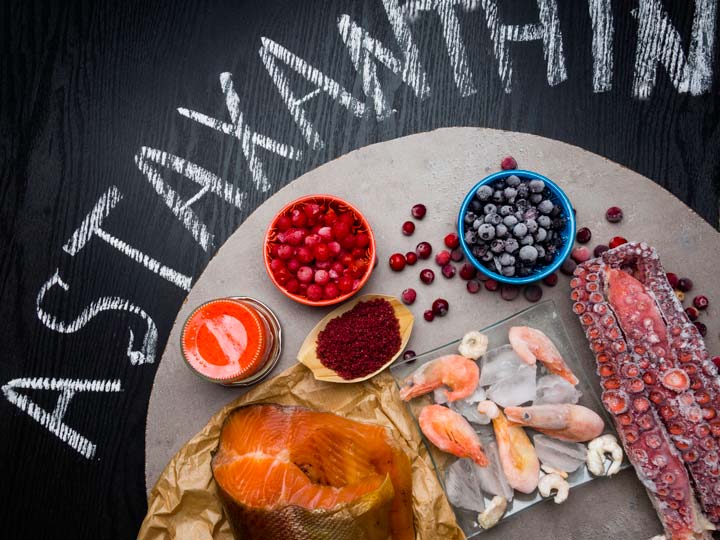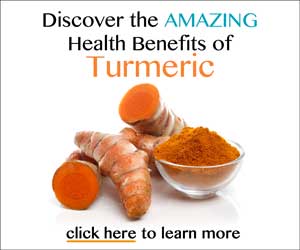Astaxanthin - An Antioxidant from Seafood

Recently, the carotenoid and antioxidant phytochemical, astaxanthin, has received much attention from scientific publications, in regard to its role in skin health and aging. But what is this important age-defying phytochemical? And what are the ways in which it can aid in overall skin appearance and health? The following article will look into the makeup of this natural chemical, the many reported skin-health benefits, as well as some of the ways we can incorporate it into our diet, both through foods and supplements.
What is Astaxanthin?
Astaxanthin is a naturally-occuring pigment, common in a variety of the planet’s living organisms and food sources. A form of phytochemical called a terpene, this pigment is classified as a xanthophyll, or a color-bearing, lipid-soluble carotenoid. A red or pinkish to yellow hue, this pigment gives living organisms the support they need for proper growth and survival. Why is this chemical important for the survival of some living organisms? Because it acts as a powerful biological antioxidant, holding protective capacities up to ten times higher than most other carotenoids, and one-hundred times higher than Vitamin E. Studies show that this antioxidant is stronger than lutein, lycopene and tocotrienols. Astaxanthin, with its unique chemical structure, increases the stability of the cellular membrane by lying crosswise inside the cell.
Mechanisms of Action
Similar in structure to beta-carotene, this antioxidant also helps living organisms to quench, scavenge and trap free radicals inside its structure. Not only can it trap these harmful toxins effectively, it also has the ability to trap more types of radicals, such as singlet and triplet oxygen. Typically, a substance will lose an electron (a process that destabilizes the substance), when going through a metabolic process. Instead of sacrificing an electron, astaxanthin stabilizes these metabolic toxins radicals by simply adding them to its own double-bonded chain.
It also aids in preventing lipid peroxidation, as well as enhances the protective capacities of other antioxidants in the body. Astaxanthin has the ability to stop and reverse oxidative damage to both the totality of a cell’s structures, as well as healthy forms of cholesterol. Unlike plants, humans cannot make and synthesize carotenoids on their own. For this reason, it is important that we ingest this phytonutrient in the form of eating plants and animals that can create it.
Health Benefits of Astaxanthin
Studies show that astaxanthin molecule exhibits superior antioxidant properties than beta-carotene in several investigations. Currently, the pigment is under vigorous study in an attempt to understand the potential benefits of this potent antioxidant on human health. Several studies have demonstrated its effectiveness in preventing forms of cancer, such as urinary bladder carcinogenesis, in rats and mice. Another study from Harumi Jyonouchi and the University of Minnesota, show that astaxanthin can boost immune function by stimulating immunoglobulin production in response to T-helper cells, as well as partially restore lowered immune responses in aging mice.
Other preliminary studies on suggest that astaxanthin may provide the following benefits to overall health:
- Shields against the oxidation of essential polyunsaturated fatty acids
- Protection against the effects of ultra violet light, the main cause of sun-related cancers
- Enhanced overall immune response
- Improved reproductive capacities
- Appears to enhance cancer-protective mechanisms
- Enhances detoxification of toxins by attaching to harmful material and transporting itself out of the body through the liver
- Protects cellular and mitochondrial membranes
- Protects the retinas against photo-oxidative damage
- Reduces arterial plaque formation in the body
- Increases overall strength and endurance
- Protects the body against nerve damage associated with age-related macular degeneration
- Has antioxidant effects in the brain, via its enhanced ability to cross over the blood-brain barrier
- Protects against hypertension and stroke
- Aids in improving memory in individuals with vascular dementia
- May be effective at treating ischemic reperfusion injury
- May be used to treat and prevent Alzheimer's disease, spinal cord injuries, Parkinson's disease, as well as other kinds of central nervous system issues
Food Sources of Astaxanthin
Foods containing the highest concentrations of astaxanthin include the majority of all crustaceans, such as lobster, crabs, shrimp, and crawfish. You may note that each of these marine foods has a pinkish-reddish tone. This is due to the coloring of astaxanthin. Another healthy example of this pinkish tone, is the natural form of wild salmon, a food containing high amounts of astaxanthin. Other food sources include micro-algae, yeast, trout, and krill.
Supplement Forms of Astaxanthin
Coming in more than just its natural nutritional form, astaxanthin is also sold as a food supplement, coming from both natural and synthetic sources.
Side Effects and Contraindications
Preclinical studies show that this supplement/food source is safe. There are are little known side effects, but this substance could cause allergic reactions in individuals with allergies to shell-fish. As with any supplement, please consult a doctor before taking, especially in the case of individuals taking other forms of pharmaceutical medication.



